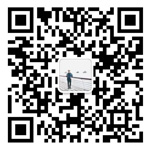Cat5 an Cat6 Difference
 Jan 27, 2024|
Jan 27, 2024| View:63
View:63Twisted-pair cable can be divided into unshielded twisted-pair (UTP) and shielded twisted-pair (STP) shielded twisted-pair cable is wrapped by the outer layer of aluminum platinum to reduce radiation, but does not completely eliminate the radiation, shielded twisted-pair cable is relatively high in price, the installation of the cable than the unshielded twisted-pair cable to idle difficult!
Unshielded twisted pair cable has the following advantages: no shielded jacket, small diameter, saving the space occupied, light weight, easy to bend, easy to install, will minimize or eliminate the near-end crosstalk, flame retardant; independence and flexibility, suitable for structured integrated wiring.
Twisted-pair cable common models are as follows: Class (CAT1): mainly used for the transmission of voice (a class of standards are mainly used for telephone cables before the early 1980s), unlike data transmission. -Category 2 cable (CAT2): transmission frequency of 1MHZ, for voice transmission and data transmission at a maximum transmission rate of 4Mbps, commonly used in the use of 4MBPS specification of the token transfer protocol of the old token network.
Category 3 cable (CAT3): Transmission frequency of 16 MHZ, used for voice transmission and data transmission up to a maximum rate of 10 Mbps is mainly used for 10BASE-T, the cable specified in the ANSI and EIA/TIA568 standards.
Category 4 (CAT4): Transmission frequency of 20 MHz for voice transmission and data transmission up to a maximum rate of 16 Mbps mainly for token-based LANs and 10BASE-T/100BASE-T.
Category 5 (CAT5): Transmission frequency of 100MHZ, used for voice transmission and data transmission at a maximum rate of 100Mbps, mainly used for 100BASE-T and 10BASE-T networks. This is the most commonly used Ethernet cable, which has an increased winding density and a high-quality insulating material.







